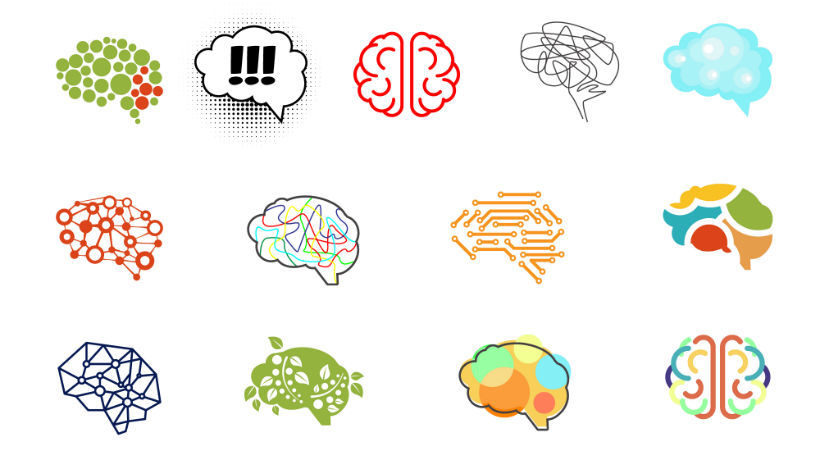17 Interaction Design Examples For Adult Learning
Interactivity helps make eLearning courses highly engaging and productive for adult learners. Here, we’ll see a few interaction design examples for every level of interactivity in your online courses for adult students, as well as the instructional uses of each type of interaction. Let’s begin!
Interaction Design Examples: Level 1 Interactivity
1. Buildup And Rollover
In this type of interaction, an image builds part by part with its relevant text. When the entire image is built, the learner can click on/roll the mouse over any part to know more about it. This explanation could be in the form of text, image, or video.
When Can This interaction Be Used?
Concepts, processes, procedures, products, or elaborate systems can be effectively explained using this type of interaction. Interconnected parts appear and are described in segments, each building one after the other. For example:
- Show a diagram of a product being assembled and allow the learner to explore each part by rolling mouse over it.
- Present a flowchart in a sequence and let the learner learn more about each step of the chart by clicking on it.
2. Flash Or Flip Cards
These are one of the fast-paced learning templates you can use. They allow learners to quickly revisit information and test knowledge. In this type of interaction, the leaner needs to flip the card(s) to reveal the description, cues, or images on the flip side.
When Can This interaction Be Used?
This type of interaction comes in handy to reinforce core concepts, facts, and vocabulary. You could also use it to test the knowledge of your learners, helping them retain knowledge over the long-term. For example:
- Questions appear on one side of the card and the corresponding information or answers appear on the flip side.
- Give a clue on the front side and help adult learners recall the information on the back.
3. Steps Or Ladder Depiction
This type of interaction allows you to represent content as sequenced steps, each step having a caption and an accompanying description. The steps appear one after the other and learners can click on each step to know more about it.
When Can This interaction Be Used?
This type of interaction is very useful when information needs to be made available in a sequence such as a task, process, or workflow. For example:
- Consumer buying process
- Quality assurance process.
4. Pyramid
In this type of interaction, the learner can view a hierarchical representation of a concept. A click or rollover of the mouse on each level will display its description. The pyramid could have more than one face where different subsets of a concept can be explained on each face.
When Can This interaction Be Used?
This interaction model can be used to help learners discover information about hierarchical relationships, concepts, and processes. For example:
- To showcase an organizational structure
- To explain a particular theory
5. Panning Cards
In this type of interaction, the learner can pan through a series of images in a 3D way. Learners can read more about the image by clicking on it.
When Can This interaction Be Used?
Panning cards can be used to create slideshow type of interactive presentations and can be enriched using a set of images or videos along with supporting description and audio. For example: Key features of a product
- Top tourist attractions
- Achievements of the organization
Interaction Design Examples: Level 2 Interactivity
6. Tabs
In this type of interaction, a series of tabs are displayed on the screen. This is a great navigation widget for learners to switch between information present on various tabs. When the learner clicks on a tab, information pertaining to that tab is displayed. This interaction lets adult learners explore a group of related items, walk through concepts, or compare objects.
When Can This interaction Be Used?
Tabs are suitable to explain information which need not be read in a sequence and learners can choose the order. You could use it to present a lot of related content chunks or /categories/features in a logical and user-friendly way. For example:
- Key functions of various departments
- Organizational Do’s and Don’ts
- Types of sexual harassment
7. Interactive eBook
In this type of interaction, the learning content is presented in the form of a book and learners need to flip the pages to read through. Learners can directly reach a particular topic/ page by clicking the topic in the Table of Contents or by typing the page number in given field. This interaction combines the familiarity of reading books with digital content which could be a combination of text, images, hyperlinks, audio, and video.
When Can This interaction Be Used?
These multimedia 3D eBooks can be used to present information which can be logically divided into sub-topics, in an interactive way. For example:
- Employee handbook
- Highlights of various organizational departments for a year
- Company history
8. Character Dialog Or Conversation
This type of interaction presents content in a conversational way and engages learners with illustrated characters. It is a great way to illustrate a dialogue between two or more individuals/objects, and unfold the learning content along. The conversation can be presented in the form of only audio, only on-screen text, or both in sync.
When Can This interaction Be Used?
Character Dialog/Conversation can be used to give a human/lively touch to your course and present information in a conversational format. For example:
- Customer service call
- Job interview
- Employee training by manager
- Employee induction program
9. Interactive Video
In this type of interaction, the learner is shown a video that pauses at set intervals to reveal either additional information or questions to test knowledge. It actively involves learners during a video and gives them feedback wherever required.
When Can This interaction Be Used?
Interactive video can be used to explain a video or pause for a teaser question to ensure that the learners are paying complete attention. For example:
- Explain product lifecycle or product assembly through a video and check knowledge where required.
- Explain about the company’s core competencies through a video and provide extra information where required.
10. Labeled Images Or Graphics
In this type of interaction, the learner is presented with an image that has a few marked elements. When clicked, elements display additional text, image, and/or video information.
When Can This interaction Be Used?
This type of interaction can be used to draw learners’ attention to important parts of an image. It is a great way to elucidate a diagram or a graphic. For example:
- Describe features of a software
- Highlight various parts of a machine
- Explain a working setup
Interaction Design Examples: Level 3 Interactivity
11. Scenario Exercise Or Mini Scenario
In this type of interaction, the learner is put in a situation with multiple paths that lead to different endings. The learner is required to analyze the scenario and choose the path of the scenario. A corrective feedback is provided for each of the decisions of the learner.
When Can This interaction Be Used?
This type of interaction can be used to teach learners about how to make a good choice or decision. Learners face realistic challenges and consequences of their decisions. For example:
- How to attend a customer
- How to deal with a situation or problem
- Guiding a learner through any process which has multiple outputs
12. Role Play
This type of interaction places the learner in a story/scenario as a character that must investigate or do research to solve a problem. Essentially, the learner reads about a situation and then proceeds to solve the stated problem.
When Can This interaction Be Used?
This type of interaction can be used to engage adult learners by putting them in a particular role and make them analyze the situation from the role player’s perspective. For example:
- Problem-solving techniques
- Managing team conflicts
- Process management training
13. Visual Assessment
In this type of interaction, the learner is first presented with a visual story or scenario and then needs to answer some questions related to it. It is like an open book test where the learner can anytime refer to the visual representation while answering the questions.
When Can This interaction Be Used?
This type of interaction can be used for knowledge reinforcement or quick knowledge check. The use of multimedia elements like audio-visual introductory screen and questions, make the interaction captivating.
For example, explain a complex process, procedure or a model as a graphic and include questions to test understanding.
14. Mind Map
In this type of interaction, the learner can explore a key concept and elements surrounding that concept with the help of a mind map. The learner can click a particular event/element/node to expand and also view additional information which could be in the form of text, images, and videos.
When Can This interaction Be Used?
This powerful graphical technique can be used to break enormous information into simple sets, or to simplify complex concepts and relationships between ideas, in a recallable layout. A mind map can, in fact, be used to explain or expand any concept/subject/theory
15. Classification Or Sorting
This type of interaction model enables you to create a classification exercise of items which can appear in image and text combinations. Learners have to drag and drop items in various category buckets. This interaction could also provide the option to show immediate, delayed, or no feedback.
When Can This interaction Be Used?
This type of interaction can be used to reframe static content into interactive knowledge checks. These exercises invite learners to take actions and make decisions. The goal is to engage and challenge adult learners to apply what they’ve learned. From simple labeling exercises to sorting, and even filling in the blanks, this interaction can be used in a variety of creative ways. For example,
- Classification of items into categories
- Classification into Do’s and Don’ts
- Assembling a particular machinery/setup
Interaction Design Examples: Level 4 Interactivity
16. Complex Simulations
Simulations are the imitation of real-world process operations, applications, or systems. They provide learners with an opportunity to learn by doing and bring them close to real life situations. Real-time feedback is provided to learners at each step. There are different types of simulations that can be used in eLearning, such as software simulation, business simulation, procedural simulation, technical simulation and virtual representation of a real environment.
When Can This interaction Be Used?
Simulations can be used for skill development for cases where learners are required to apply the knowledge in their jobs or real-life situations. For example:
- Application training
- Process training
- Equipment operation training
- Management skills training
17. Serious Games
Serious games in eLearning allow learners to engage with new skills or subject matter in a fun way. Learners are expected to work towards a stated goal, either individually, or in a group. They need to make choices of actions and face the results of those actions. They are allowed to experiment and make mistakes in a safe environment and get real-time feedback for each of their decisions. Serious games are unlike simple quiz games which aim to only test the learner’s understanding through questions.
When Can This interaction Be Used?
Serious games can be used when you want to create an impact on the learners’ mind, provide practice for real-life scenarios or impart new skills. Games can address many training requirements such as skills training, compliance training, and product training.
Whereas with serious games, learning gets unfold as the learners apply skills to the virtual world. Game elements such as goals, challenges, rules, barriers, characters, objects, competition, scoreboards, badges, and achievements are used in this interactivity.
Conclusion
The possibilities of building interactivity and creating interactions in eLearning courses are endless. Factors like learning objectives, type of training and content, target audience, and project scope will greatly influence the level of interactivity for your course.
The degree of engagement for adult learners will increase as the level of interactivity increases. However, high levels of interactivity will not always have a great impact, but effective use of lower levels can also give good results.
Choosing the right combination and amount of interactions is the key to effective adult learning. Needless to say, the essence of learning objectives and content must stay at the core for any interactivity level.








